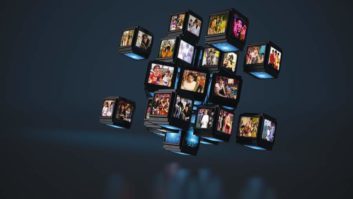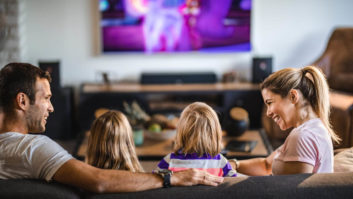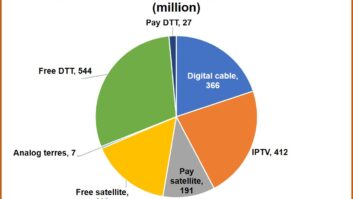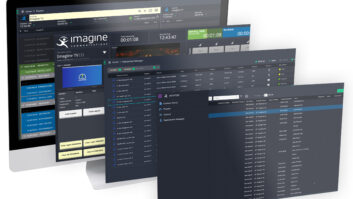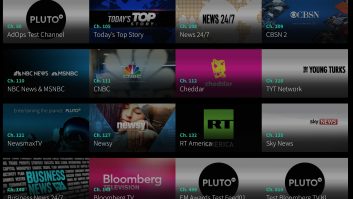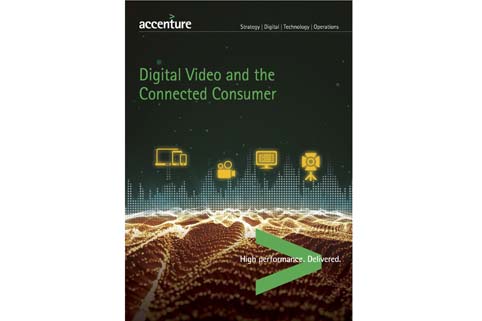
The television’s popularity as the go-to entertainment device may be ending, according to ‘Digital Video and the Connected Consumer,’ a new research report from Accenture. The television was the only product category to see uniform, double-digit usage declines across different types of media worldwide among viewers of nearly all ages. It is rapidly being replaced as consumers turn to a combination of laptops, desktops, tablets and smartphones to view video content.
The report, developed for communications, media and technology companies, found that video consumption anytime, anywhere has become mainstream, accelerating the decline of traditional TV viewing. Viewership for long form video content, such as movies and television on a TV screen, has declined by 13 per cent globally over the past year and by 11 per cent in the United States. Similarly, the report found sports viewership on TV screens declined by 10 per cent globally and nine per cent in the United States.
Nearly all age brackets reported double-digit declines in TV viewing globally, with 14- to 17-year-olds abandoning the TV screen at the rate of 33 per cent for movies and television shows and 26 per cent for sporting events. This decline continues for 18- to 34-year-olds at 14 per cent for movies and television shows and 12 per cent for sporting events, and for 35- to 54-year-olds, at 11 and nine per cent, respectively. It does, however, flatten among the 55 and older crowd, at six per cent and one per cent respectively.
“We are seeing a definitive pendulum shift away from traditional TV viewing,” said Gavin Mann, Accenture’s global broadcast industry lead. “TV shows and movies are now a viewing staple on mobile devices of all shapes and sizes, thanks to improved streaming and longer battery life. The second screen viewing experience is where the content creators, broadcasters and programmers will succeed or fail.”
To that point, the report found that more than a third (37 per cent) of consumers own a combination of smartphones, laptops/desktops, and tablets. Among those who plan to buy a TV, 61 per cent expect to buy a connected TV, and 25 per cent are planning to buy a 4K TV, an increase of seven per cent over last year. These purchasers report that they use these devices to access all kinds of content on a daily basis.
As consumers view more content online, the quality of online service is becoming a growing concern. According to Accenture’s analysis, 89 per cent of consumers watch long form video on connected devices, but many report issues with their viewing experience. The primary complaint among more than half (51 per cent) of respondents watching online video was poor internet service. They complained about too much advertising placement (42 per cent); buffering, or the time it takes for video to start playing, (33 per cent); and loss of sound or distortions during play (32 per cent). At the same time, respondents said they would pay for online video service if it included greater content variety, less advertising, and better video quality.
The research also found, however, that traditional broadcasters have a strong advantage over new market entrants, as respondents showed a preference for the dominant TV broadcaster, satellite and cable providers versus newer internet providers. When consumers were asked if pay-TV channels or Video on Demand services from brands like Apple, Netflix and Google were an appealing offer, they scored those options scored significantly lower than traditional broadcasters.
“New entrants, regardless of their brand, will have to prove their service quality to consumers to capture significant market share,” said Mann. “Consumers prefer established brands, and broadcasters need to capitalise on this while the iron is hot by aggressively investing in multi-device platforms and securing partnerships that leverage their footprint into the mobile space. A simple repackaging of the same programming available anywhere may not do it. It needs to be unique and special.”
Viewing is happening simultaneously across multiple devices, with 87 per cent of consumers using more than one device at a time. Globally, the smartphone is the most frequent companion device scoring 57 per cent overall. This trend is particularly strong for millennials, with 74 per cent of 14- to17-year-olds using a combination of TV/smartphones during viewing. This is not the case in North America, where a laptop/computer was used more frequently for simultaneous viewing (59 per cent versus 42 per cent for smartphones).
“Understanding consumers and ensuring decision-making is centered on consumer insights will be increasingly key to success,” said Mann. ³This relentless focus on consumer optimisation will have an impact on all elements of a broadcaster’s business, from content decision-making to implementing converged operating models and exploiting the data advantage. The future leaders in media and entertainment will be those who listen to the audience and can tailor their content and services to this new reality.”
